Irene Nikkarinen
UniMorph 4.0: Universal Morphology
May 10, 2022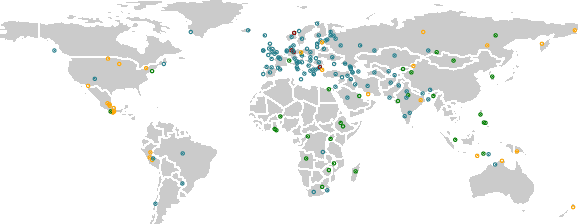

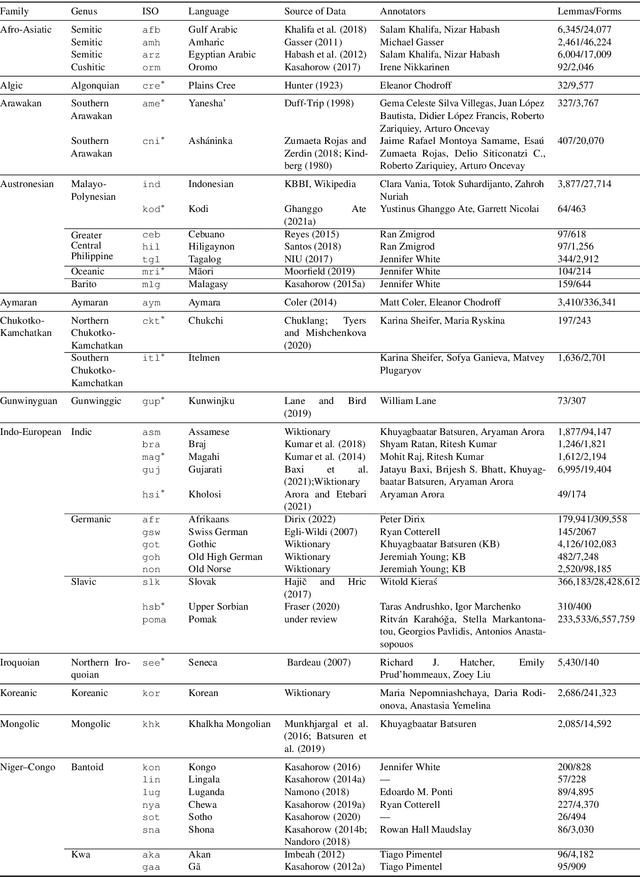
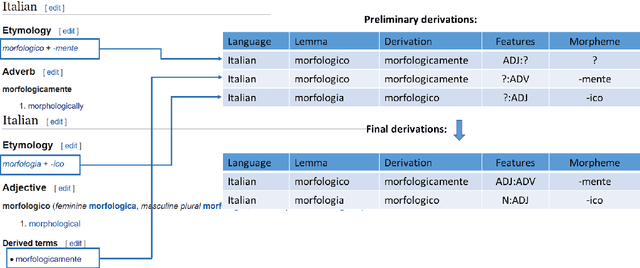
Abstract:The Universal Morphology (UniMorph) project is a collaborative effort providing broad-coverage instantiated normalized morphological inflection tables for hundreds of diverse world languages. The project comprises two major thrusts: a language-independent feature schema for rich morphological annotation and a type-level resource of annotated data in diverse languages realizing that schema. This paper presents the expansions and improvements made on several fronts over the last couple of years (since McCarthy et al. (2020)). Collaborative efforts by numerous linguists have added 67 new languages, including 30 endangered languages. We have implemented several improvements to the extraction pipeline to tackle some issues, e.g. missing gender and macron information. We have also amended the schema to use a hierarchical structure that is needed for morphological phenomena like multiple-argument agreement and case stacking, while adding some missing morphological features to make the schema more inclusive. In light of the last UniMorph release, we also augmented the database with morpheme segmentation for 16 languages. Lastly, this new release makes a push towards inclusion of derivational morphology in UniMorph by enriching the data and annotation schema with instances representing derivational processes from MorphyNet.
Modeling the Unigram Distribution
Jun 04, 2021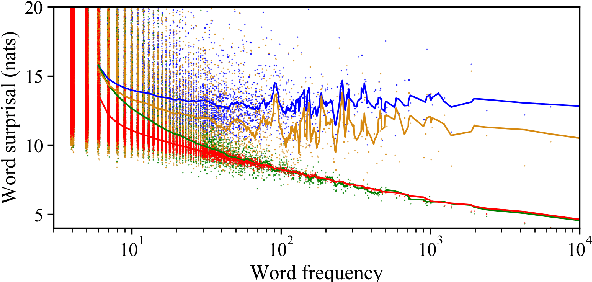
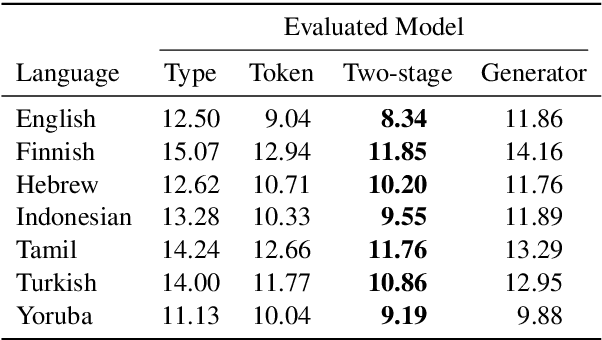

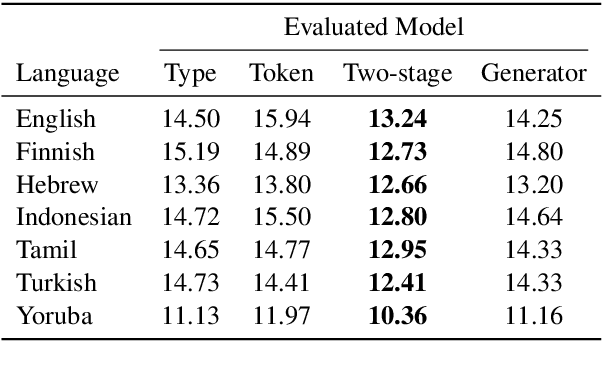
Abstract:The unigram distribution is the non-contextual probability of finding a specific word form in a corpus. While of central importance to the study of language, it is commonly approximated by each word's sample frequency in the corpus. This approach, being highly dependent on sample size, assigns zero probability to any out-of-vocabulary (oov) word form. As a result, it produces negatively biased probabilities for any oov word form, while positively biased probabilities to in-corpus words. In this work, we argue in favor of properly modeling the unigram distribution -- claiming it should be a central task in natural language processing. With this in mind, we present a novel model for estimating it in a language (a neuralization of Goldwater et al.'s (2011) model) and show it produces much better estimates across a diverse set of 7 languages than the na\"ive use of neural character-level language models.
How (Non-)Optimal is the Lexicon?
Apr 30, 2021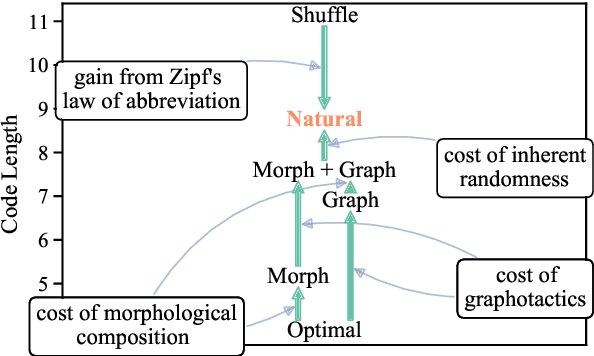

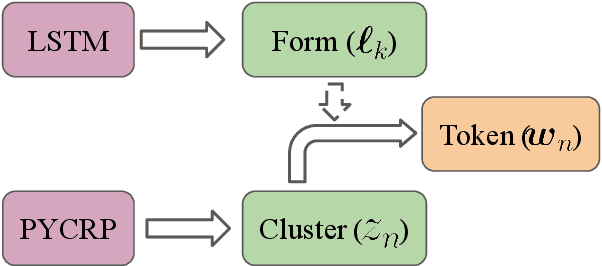
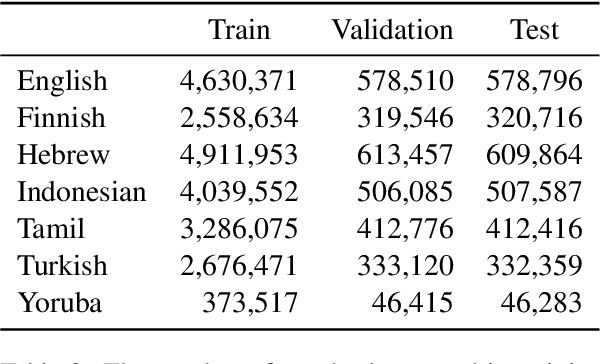
Abstract:The mapping of lexical meanings to wordforms is a major feature of natural languages. While usage pressures might assign short words to frequent meanings (Zipf's law of abbreviation), the need for a productive and open-ended vocabulary, local constraints on sequences of symbols, and various other factors all shape the lexicons of the world's languages. Despite their importance in shaping lexical structure, the relative contributions of these factors have not been fully quantified. Taking a coding-theoretic view of the lexicon and making use of a novel generative statistical model, we define upper bounds for the compressibility of the lexicon under various constraints. Examining corpora from 7 typologically diverse languages, we use those upper bounds to quantify the lexicon's optimality and to explore the relative costs of major constraints on natural codes. We find that (compositional) morphology and graphotactics can sufficiently account for most of the complexity of natural codes -- as measured by code length.
SIGMORPHON 2020 Shared Task 0: Typologically Diverse Morphological Inflection
Jul 14, 2020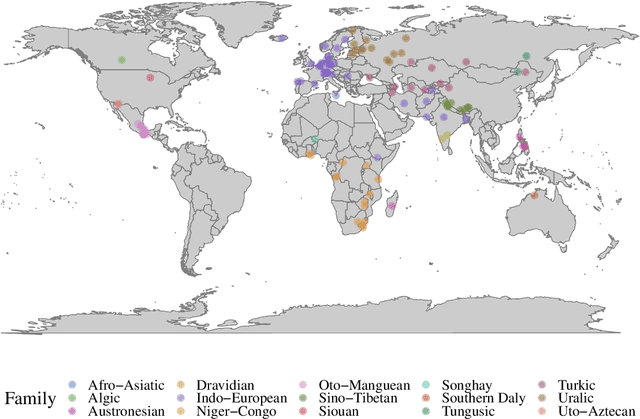
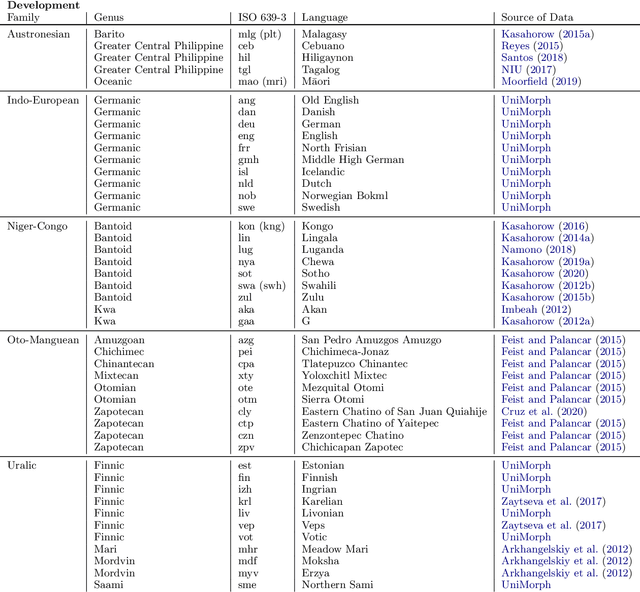
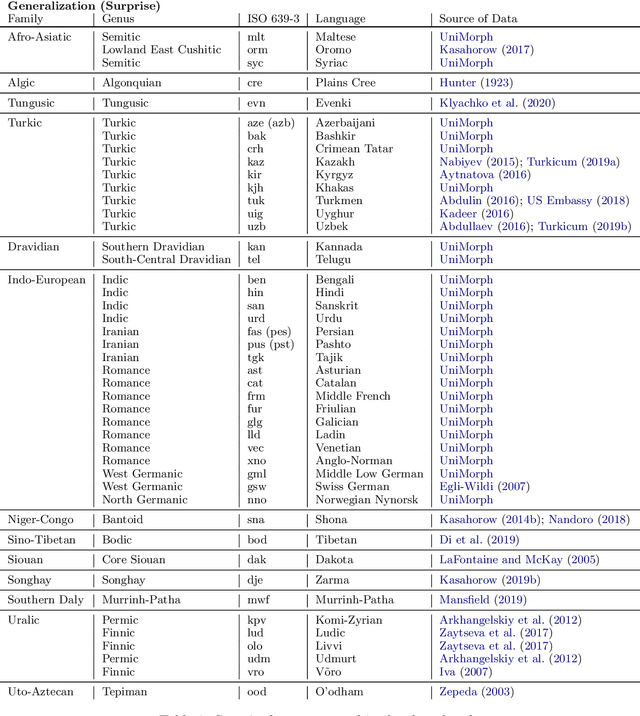
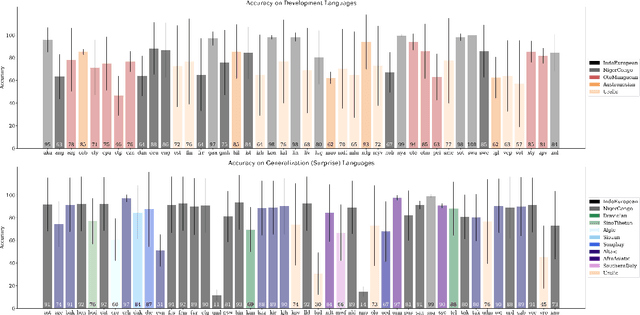
Abstract:A broad goal in natural language processing (NLP) is to develop a system that has the capacity to process any natural language. Most systems, however, are developed using data from just one language such as English. The SIGMORPHON 2020 shared task on morphological reinflection aims to investigate systems' ability to generalize across typologically distinct languages, many of which are low resource. Systems were developed using data from 45 languages and just 5 language families, fine-tuned with data from an additional 45 languages and 10 language families (13 in total), and evaluated on all 90 languages. A total of 22 systems (19 neural) from 10 teams were submitted to the task. All four winning systems were neural (two monolingual transformers and two massively multilingual RNN-based models with gated attention). Most teams demonstrate utility of data hallucination and augmentation, ensembles, and multilingual training for low-resource languages. Non-neural learners and manually designed grammars showed competitive and even superior performance on some languages (such as Ingrian, Tajik, Tagalog, Zarma, Lingala), especially with very limited data. Some language families (Afro-Asiatic, Niger-Congo, Turkic) were relatively easy for most systems and achieved over 90% mean accuracy while others were more challenging.
 Add to Chrome
Add to Chrome Add to Firefox
Add to Firefox Add to Edge
Add to Edge